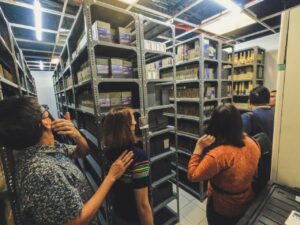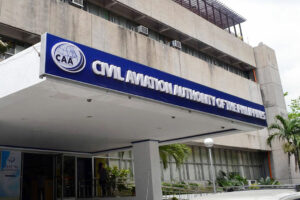Philippine film archiving institutions seek to stand the test of time

FILM archives in the Philippines are hoping to improve their skills and resources to keep the audiovisual heritage of the country alive despite the pandemic and economic crisis. This according to archivists during a forum on Oct. 27 organized by the Society of Filipino Archivists for Film (SOFIA) at the Cinematheque Centre Manila.
“The challenge for us is providing video and film a safe space with the proper temperature, control, and humidity. If we skimp on this, we will have nothing left in the next 10 to 20 years,” said Jeffrey S. Sonora, head of the Fernando Poe, Jr. (FPJ) Archives, at the event. He was referring to the refrigeration for storage of film reels.
The FPJ Archives in particular is working on acquiring technology such as insulated panels for industrial refrigeration and thermal imaging cameras for checking of leaks. It has also switched to solar energy to offset cooling costs.
“It takes 32 hours to scan a 2,000-foot film reel. With a movie usually made up of six reels, it takes a total of 192 hours to scan each movie,” added Mr. Sonora, as a way to give context to the tedious processes of film preservation and restoration.
Julie Ann S. Nealega, head of Probe Archives, agreed that it’s important for an archive to have its own equipment. Using an in-house digitization machine, the Probe Team, which ran documentary programs from 1988 to 2004, is working on digitally converting its 14,000 Umatic, mini DV, betacam, and magnetic tapes by 2025.
“It’s not just archival footage. Probe produced stories that are documentary-based and evidence-based, the preservation of which will help with fact-checking in the modern age,” she explained.
Currently, Probe is streaming shows on its social media platforms that contextualize its old documentaries.
ARCHIVE ENHANCEMENTAs part of the Mowelfund library and audiovisual archive’s enhancement program, the Mowelfund Film Institute (MFI) is also doing its part to preserve essential pieces of film history. Since the pandemic, it has conducted a reinventory of its materials and a redesign of its database software to encourage remote research.
The institute also has a short film digitization project in partnership with the Philippine Film Archive (PFA), focused on Mowelfund-produced films in 16-mm, 35-mm, and super 8 formats.
“The thing is, you could do research with our materials but even we, keepers of the archive, are not familiar with what we have,” said Ricky Orellana, MFI director and archivist, at the same event.
Filmmaker and film historian Nick de Ocampo has stated that we are sitting on a gold mine.
Meanwhile, the PFA under the Film Development Council of the Philippines (FDCP) is trying to catch up despite only being formalized in 2011 and remaining dormant until 2018. Private institutions filled in the archiving gaps left by government all the while.
“We did a good job of collecting all these materials, but it takes a lot of funds to be able to equip archives with the proper tools to take care of a collection,” said Don Gervin T. Arawan, PFA’s division manager.
He added that the main enemy of all archivists is time because film reels gradually deteriorate each day. To speed up the migration of analog archives to digital, partnerships among institutions must be encouraged, such as with the archiving talks facilitated by SOFIA.
“Film archives in other countries have passed their digitization process and are now bringing their content back to film. We are struggling to even reach that point,” he said. Each film costs about P1.5 to 2 million to process.
Like the other archives, the PFA is working on making its collections accessible through a localized media library and catalogue for researchers. Another ongoing project, a film heritage building, is pending as per a lease agreement for a property in Intramuros. — Brontë H. Lacsamana




